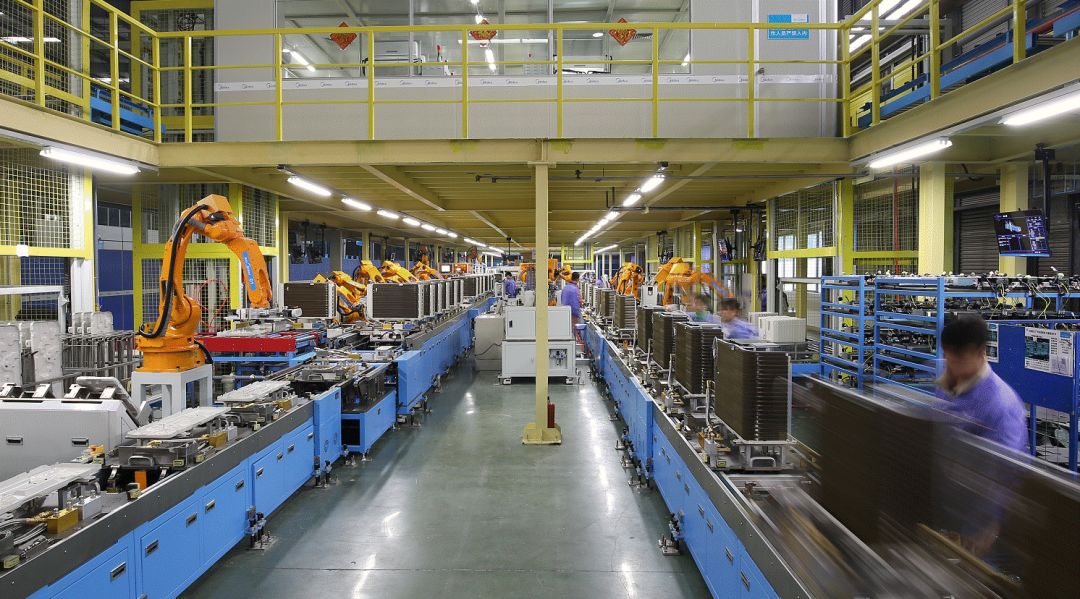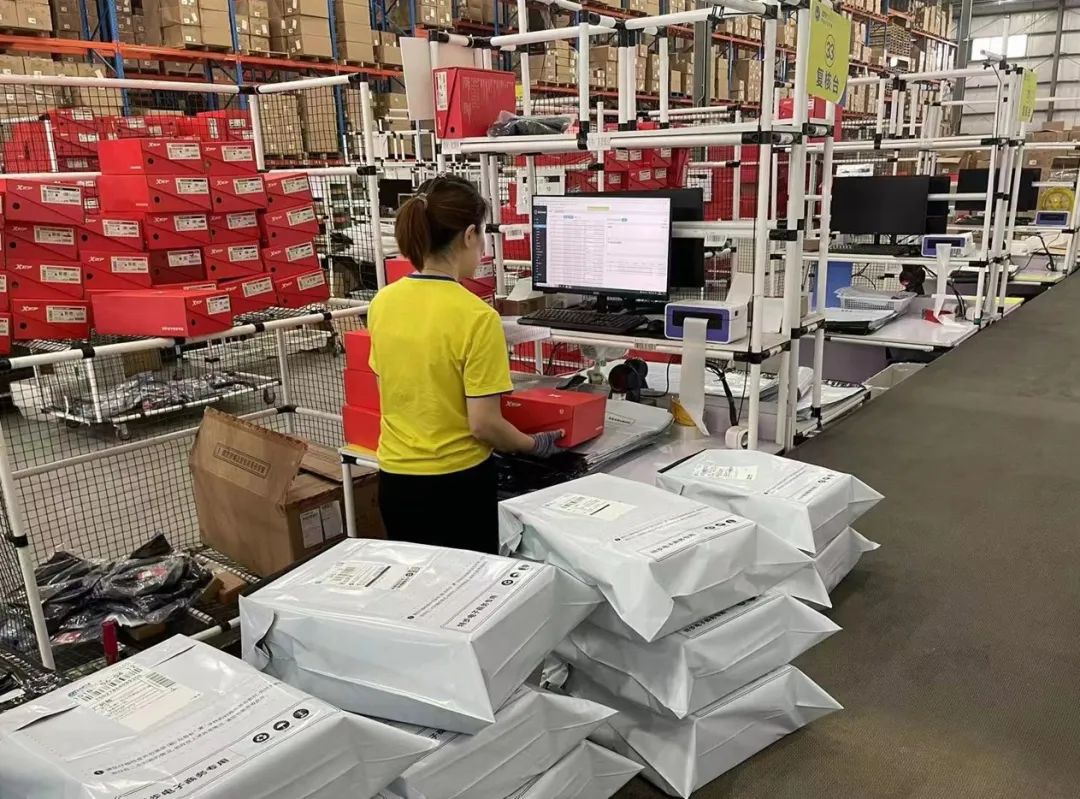From "borrowing ships" to "shipbuilding", Chinese manufactured to sea and advanced
Author:First financial Time:2022.09.21
Data is often a mapping of the real world.
The National Bureau of Statistics recently released a report of economic and social development achievements in the past decade. Data show that from 2013 to 2021, the average contribution rate of my country's economic growth to world economic growth exceeded 30%, ranking first in the world. The rise of the Chinese economy represented by manufacturing has driven the world into a rare period of high -speed growth in human history.
In the past period, the growth of China's economy's growth showed that this growth period was far from over. On September 7, the data released by the customs showed that the total value of my country's import and export in August was US $ 550.45 billion, an increase of 4.1%. Among them, the exports were US $ 314.92 billion, an increase of 7.1%; the trade surplus was US $ 79.39 billion.
It is not difficult to see that on the one hand, the supply side of Chinese manufacturing is still full of kinetic energy. On the other hand, overseas markets still have broad market demand for Made in China.

In the past 40 years, Made in China has experienced the transformation from "foundry" to "world factory" and has become an important pillar of global supply chain. At present, Made in China is ushered in a good opportunity to establish a brand mentality. How to go from "borrowing ships" to "shipbuilding" to go to sea is the key to breaking the situation next.

The "old problem" of growth and the "new solution" of foreign trade
In July last year, the State Council's "Opinions on Accelerating the Development of a New Foreign Trade Format Mode" clearly stated that it actively supported the use of new technologies and new tools to empower foreign trade development, promote the transformation and upgrading of traditional formats, and continuously explore new foreign trade formats and models.
Why do Chinese manufacturing explore new formats and new models?
Not long before, in an academic live broadcast, Professor Zhang Yansheng, chief researcher of the China International Economic Exchange Center, pointed out the reason.
"Since the reform and opening up, we mainly participate in the outsourcing chain of the offshore outsourcing outsourcing of multinational companies." Zhang Yansheng said that there is no independent intellectual property rights in offshore outsourcing, and there is no independent brand. The third has no independent marketing channels. Take a car from Western multinational companies.
Offshore outsourcing refers to the completion of the outsourcing work from different countries and its suppliers. This cooperation model is also the basic operation of the globalization process. Now Apple and A -share "Apple Concept Stocks" are still this model.
Back to the early traditional manufacturing industry, offshore outsourcing refers to "foundry" and brand processing. It is true that in the early days of the development of Chinese manufacturing, brand foundry was an opportunity for many domestic industries and the main reason for the success of the "Jinjiang model".
However, brand foundry means that the downstream of the industrial chain cannot obtain the high -end added value of product consumption. This has also failed to face a embarrassing situation in making the sea in China. It is a leading brand in the country, but it has become a foreign market, but it has become a foreign market, but it has become a foreign market, but it has become a foreign market, but it has become a foreign market, but it has become a foreign market, but it has become a foreign market, but it has become a foreign market. The "giant" on the product, the "dwarf" in the brand.
How to break the game? The answer may be "shipping by yourself."
From "borrowing ships to sea" to "shipbuilding and going to sea", new foreign trade formats such as cross -border e -commerce are bringing new opportunities for Chinese manufacturing.
According to Ai Media Consultation data, in 2021, China's cross -border e -commerce export transactions have reached 1.97 trillion. It is estimated that by 2024, the scale of China's cross -border export e -commerce transactions will generally exceed 2.95 trillion.
In overseas markets, the experience and capabilities of Chinese companies' design, technology and innovation are not bad, but what is lacking is the experience of market protection and self -intellectual property rights. With new technologies and tools such as cross -border e -commerce, the hope of shaping the format and model of new foreign trade.
We are paying attention to the "2022 Duoduo Ocean Support Plan" that has recently launched. In addition to related support measures, the plan clearly proposes that it will provide an integrated service plan for manufacturing merchants to go to the sea, and for the more concerned overseas intellectual property rights for manufacturing merchants, the manufacturing merchants will be more concerned about overseas intellectual property rights rights. Protection issues have taken the lead in making high scores in domestic cross -border e -commerce business.
The relevant person in charge said that on the one hand, Pinduoduo's cross -border e -commerce business will effectively protect the interests of intellectual property rights in all parties with the strictest intellectual standards, and participate in global competition with Chinese manufacturing merchants.
On the other hand, a large number of Chinese manufacturing companies have accumulated a lot of experience and capabilities in design, technology and innovation, but because some companies lack experience in protecting their own rights and interests in international markets, coupled with the existence of strong subjects in market trade Some "overlord clauses" or non -fair behaviors eventually led to Chinese companies to eat dumb losses.为此,拼多多将利用自身上市公司主体的信用背书,和国际化专业团队的优势,为中国制造业出海提供有力的法律服务支撑,帮助商家构建完善的法律保护体系,获得应有的价值和respect.
At least, this is a goal and attempt worth looking forward to.

The essence of "new business" to go to sea: adjustment and adaptation of global supply chain
From the perspective of supply and demand, the long -term difficulties faced by China's manufacturing industry are that they cannot directly connect the needs of overseas end users and obtain the corresponding value.
For example, the Chinese brand sells a pair of 600 yuan basketball shoes in overseas. Among them, the net profit may be less than 100 yuan, deducting the "necessary costs" such as the necessary production costs, logistics costs, etc. The marketing costs and channel costs of overseas may account for Half of the cost.
Although there are overseas e -commerce platforms like Amazon, the domestic supply side and overseas demand are essentially trade between the two markets.
The "new formats" of Pinduoduo and Shein are to turn the matter of going out of the sea from the trade between the market and the market to a transaction between merchants and buyers in the market. Thomas Friedman mentioned such a point in "The World is Platform": Internet technology "pushed the world". To understand the context of trade, that is to say, the Internet's greatest promotion significance for the Internet lies in "pushing the market".
The success of Tiktok and China Nets overseas explains one thing. Whether China or the United States, and outside of cultural differences, there are no essential differences between people's demand for goods and entertainment. The key is to find satisfaction. The correct way of demand for overseas market groups.
Chinese uncle and aunts like to "cut a knife" every day. Will the uncle in the United States not like it? Maybe someone really needs to do this to have the answer.
This may be an important starting point for new formats such as Pinduoduo:
Establishing a new way of trading outside the overseas e -commerce platform. Will it be not that difficult to go to overseas and sell goods in overseas overseas products? Is there more opportunities for the accumulation of Chinese brands?
In fact, the new platform entering the market represents the evolution of a new way of transaction, and a overall trend of the evolution of commercial trade is that, driven by the optimalization of costs, the consumption terminal will gradually approach the production end and reduce the distance between the two ends. Essence
From the perspective of a large timeline, whether it is a traditional distribution system, a direct -operated system that originated in the West, or the e -commerce revolution set off in the Internet in the past one or two decades, it all follow this trend. However, after the 2021 foreign trade explosion, this trend also appeared in the cross -border e -commerce field.
In essence, cross -border e -commerce is the adjustment and adaptation of a supply chain and market relationship. It is also a circulation end, and the product distribution method re -adapts to the global supply chain.
There are two prerequisites for its occurrence:
I. China's manufacturing and supply chain advantages are the basis of this change.
China has the largest manufacturing industry in the world, with a large scale of exports and a wide range. After a period of development, cross -border e -commerce is no longer simply selling one market goods to another market. For some large -scale markets, there are specialized enterprises, brands, and even independent foreign trade supply chain systems.
The new business format is actually through the direct global market, to cross the middle merchant made by China and reach overseas consumers.
In this regard, China's e -commerce platform is obviously more experienced, especially Pinduoduo, which relies on China's industry to bring a platform, has more obvious advantages.
Second, China's e -commerce business has more innovative vitality.
Whether it is Shein, Pinduoduo, or Xiaomi, JD.com, the expectations of Chinese companies are more growth dividends that can bring in overseas markets. There are actually a lot of Chinese companies to go to sea, but they can really do not do much, because companies that are truly innovative can better take root in overseas markets.
The innovation ability of Chinese e -commerce companies is not bad. For example, in terms of user operation and brand growth, Chinese e -commerce platforms have more experience. Such experience may be a kind of "diminishing dimension", and rich capabilities and experience can help brands to expand overseas markets.
On the whole, China's e -commerce model is indeed more distinctive than overseas, and continuous innovation capabilities are also one of the core advantages. As for how to better transform such advantages into the competitiveness of the brand, it still needs to be observed through practice.
Summarize:

In the second half of the year, China's economic growth and long -term growth capabilities have shown, and the capabilities of strong manufacturing and the entire industrial chain are the background of China's economic growth toughness.
The growth of foreign trade has always been one of the important engines to drive industrial growth.
Under the precise policy, the future growth path of cross -border e -commerce has gradually become clear, and the recovery of foreign trade will be further accelerated. This is not a good thing for macroeconomic growth.


- END -
Institute of International Renewable Energy: Energy transformation will further promote China's economic growth

Xinhua News Agency, Geneva, August 3 (Reporter Chen Binjie) Francisco Lakamela, di...
Ministry of Industry and Information Technology: The "Three Products" strategy of digitalizing the consumer goods industry will be accelerated
People's Post and Telecommunications News On September 14, the Ministry of Industry and Information Technology held the seventh series of theme press conferences of the seventh New Era Industrial and...